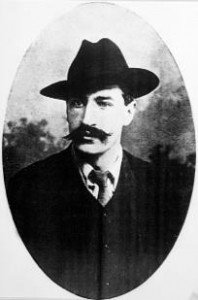Jim Larkin in the USA
Published in 18th–19th - Century History, Issue 2 (March/April 2010), Letters, Reviews, Volume 18Sir,

Jim Larkin—his circle of ‘brothers’ in the United States was riddled with informers.
—The sidebar on Jim Larkin in Jerome aan de Wiel’s article on ‘Sabotage in the USA’ (HI 18.1, Jan./Feb. 2010) is interesting in that it raises associated issues about Larkin’s stay in America between late 1914 and early 1923. Over the years there has been much speculation as to why Larkin spent so long in America. Pádraig Yeates raises the question in his Lockout—Dublin 1913 by suggesting that ‘It may be that Larkin preferred America to Ireland, at least until he landed in Sing Sing (in 1920)’. Others have speculated that although Larkin desperately wished to return to Ireland, the British government prevented him from doing so.
A detailed search of the secret Dublin Castle Special Branch Files on ‘Sinn Féin and Republican Suspects, 1899–1921’ (Colonial Office Record Series), released on DVD by Eneclann, reveals the reason for Larkin’s longer-than-intended stay in the United States—a reason that has plagued many an Irish cause in history. Yes, the British government did prevent him from doing so—with the active assistance of a number of informers within Larkin’s own circle of ‘brothers’. Two examples will suffice. According to the files, two individuals in particular were supplying detailed information to the Colonial Office in London and thence Dublin Castle. These two were Frederick Marsden and Charles Scaffa (of the Iron Workers’ Union). Another informer was Daniel D. Ryer, who swore an affidavit in which he detailed Larkin’s anti-British comments at a gathering in New York City. One of the informers provided information to the New York Police Department.
All of the information supplied by the range of informers was transmitted to and collated in the British embassy in Washington. Even Scotland Yard was kept abreast of the secret information supplied to the embassy. On one occasion (August 1917) this led the ambassador to issue a circular to all of ‘His Majesty’s Consular Officers’ to ‘refuse to viser [Larkin’s] passport’, thereby preventing him leaving the United States for Australia or any of the Dominions. It appears that Larkin (described in the file by the ambassador, Cecil Spring Rice, as ‘the Irish agitator’) was aware that he would be prevented from leaving the US for travel directly to England or Ireland. So, according to one informer, Larkin was planning to get to one of the Dominions and from there continue his journey to Ireland.
Frustrated in his desire to get back to Ireland, Larkin became more and more outspoken in his criticism of the ‘Wars of Kings and Kapitalists’, winding up in Sing Sing for his troubles. The previously secret Dublin Castle file on Larkin (CO 904/206/233A), consisting of over 200 pages, deserves deep mining.—Yours etc.,
KIERAN McGOVERN
Dublin 16
















